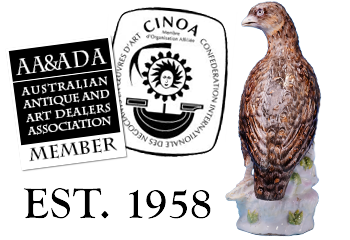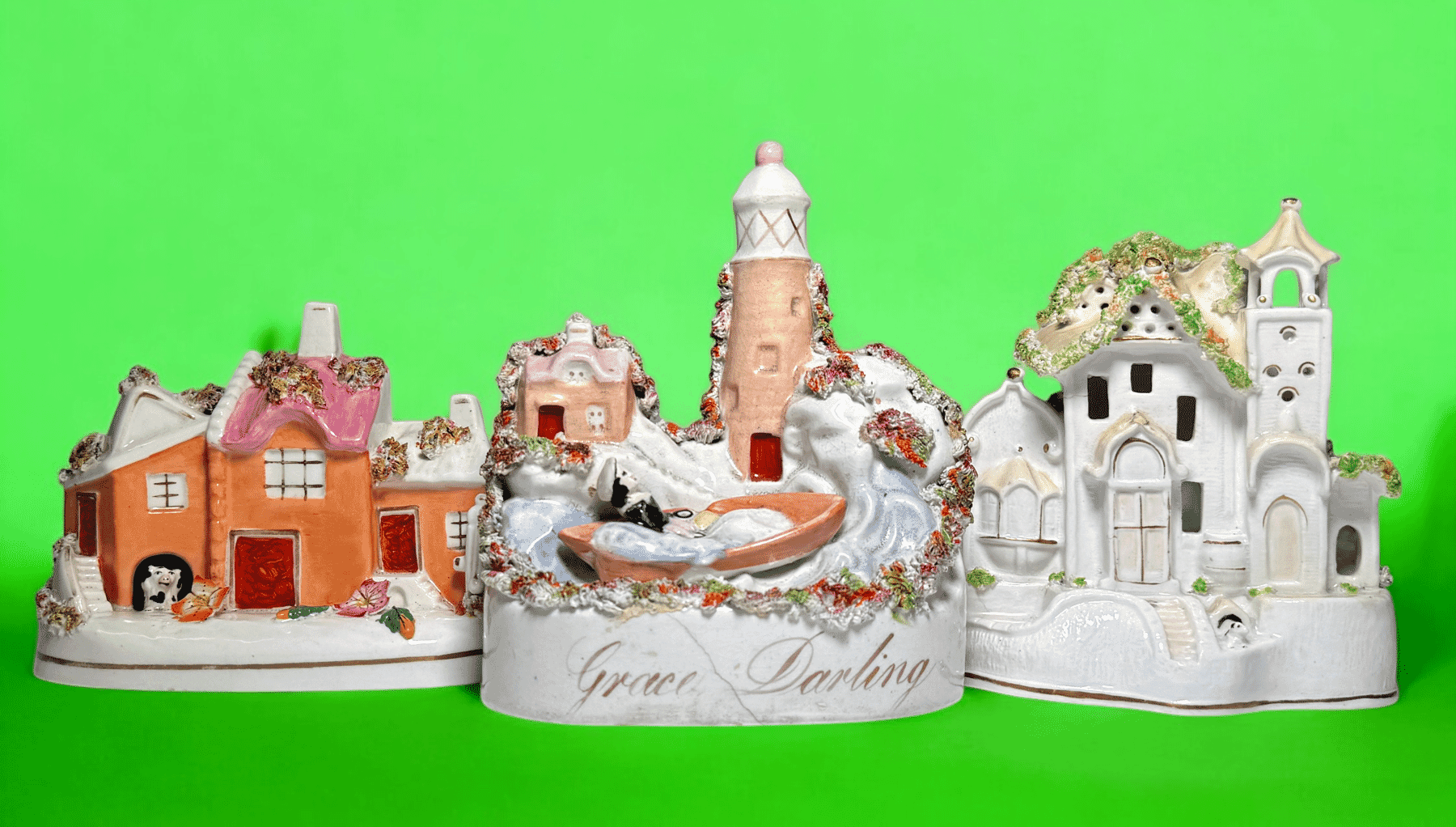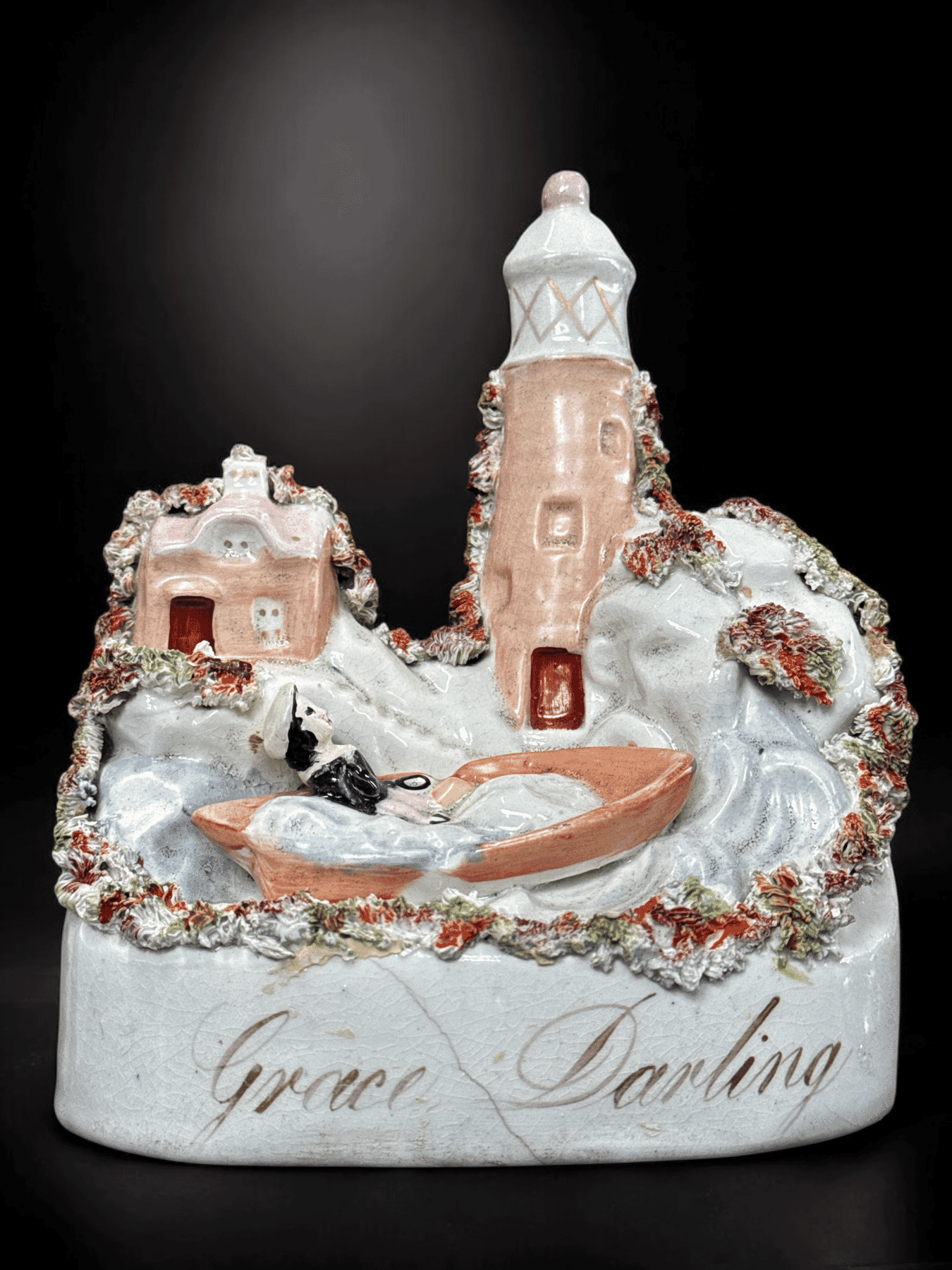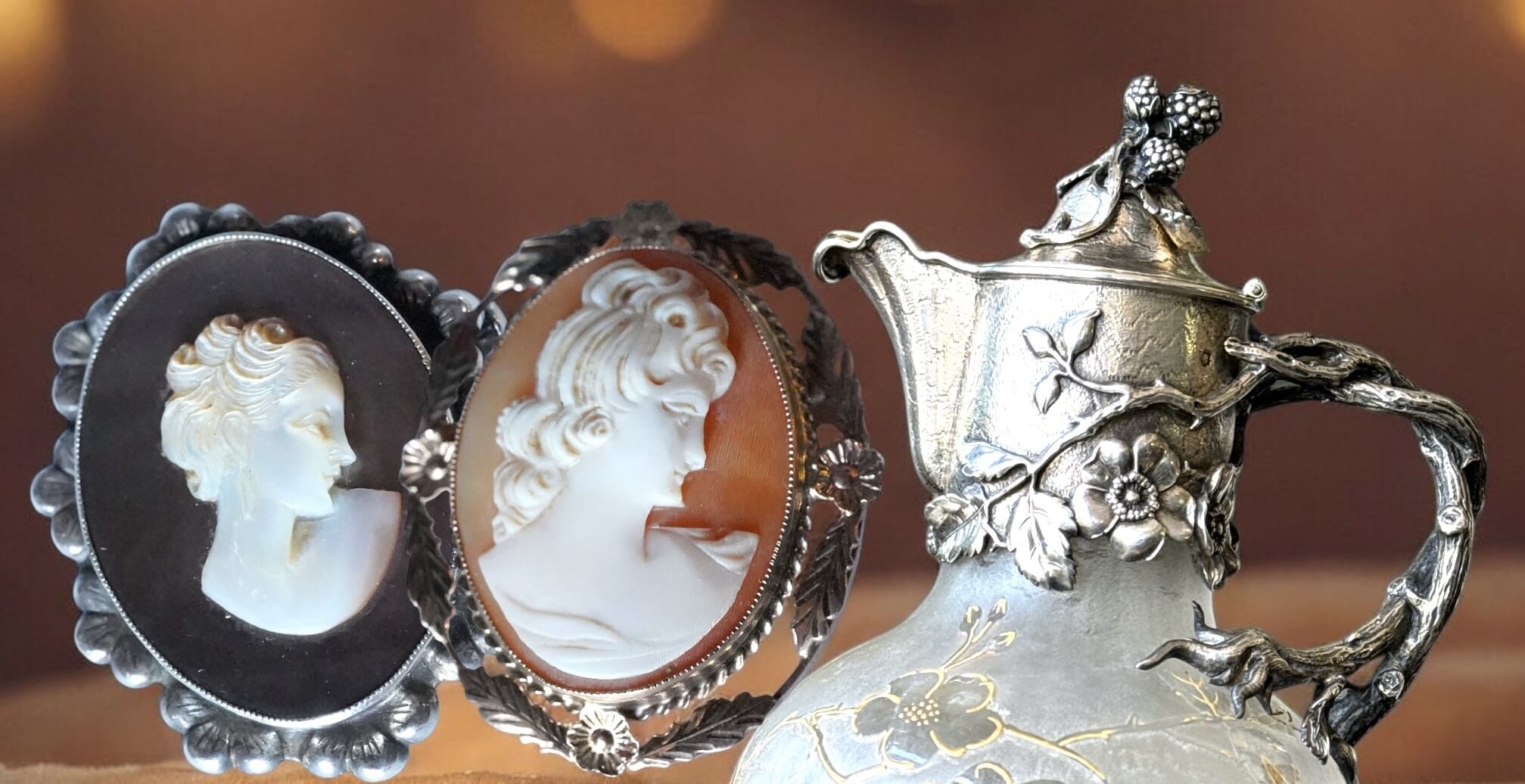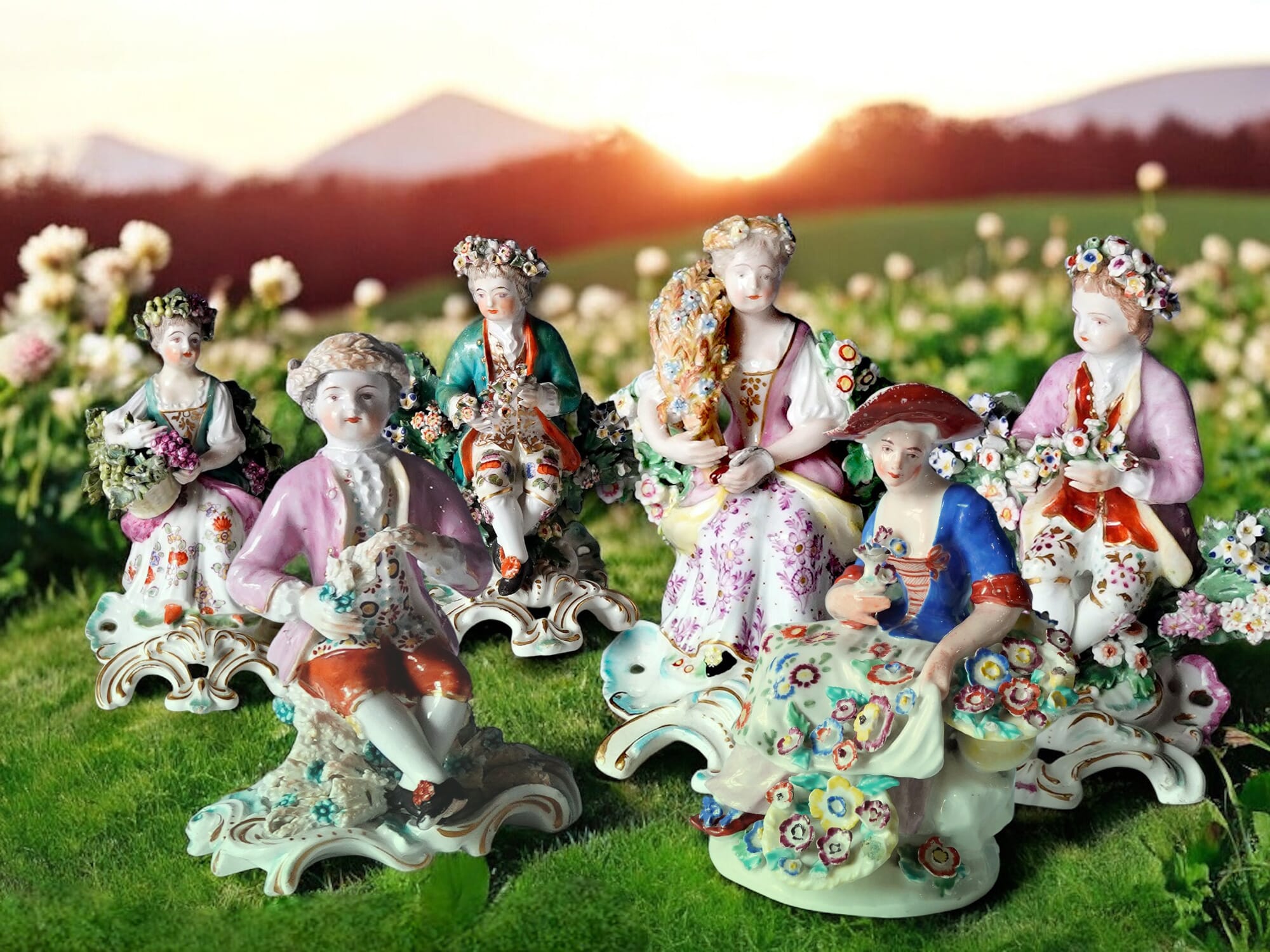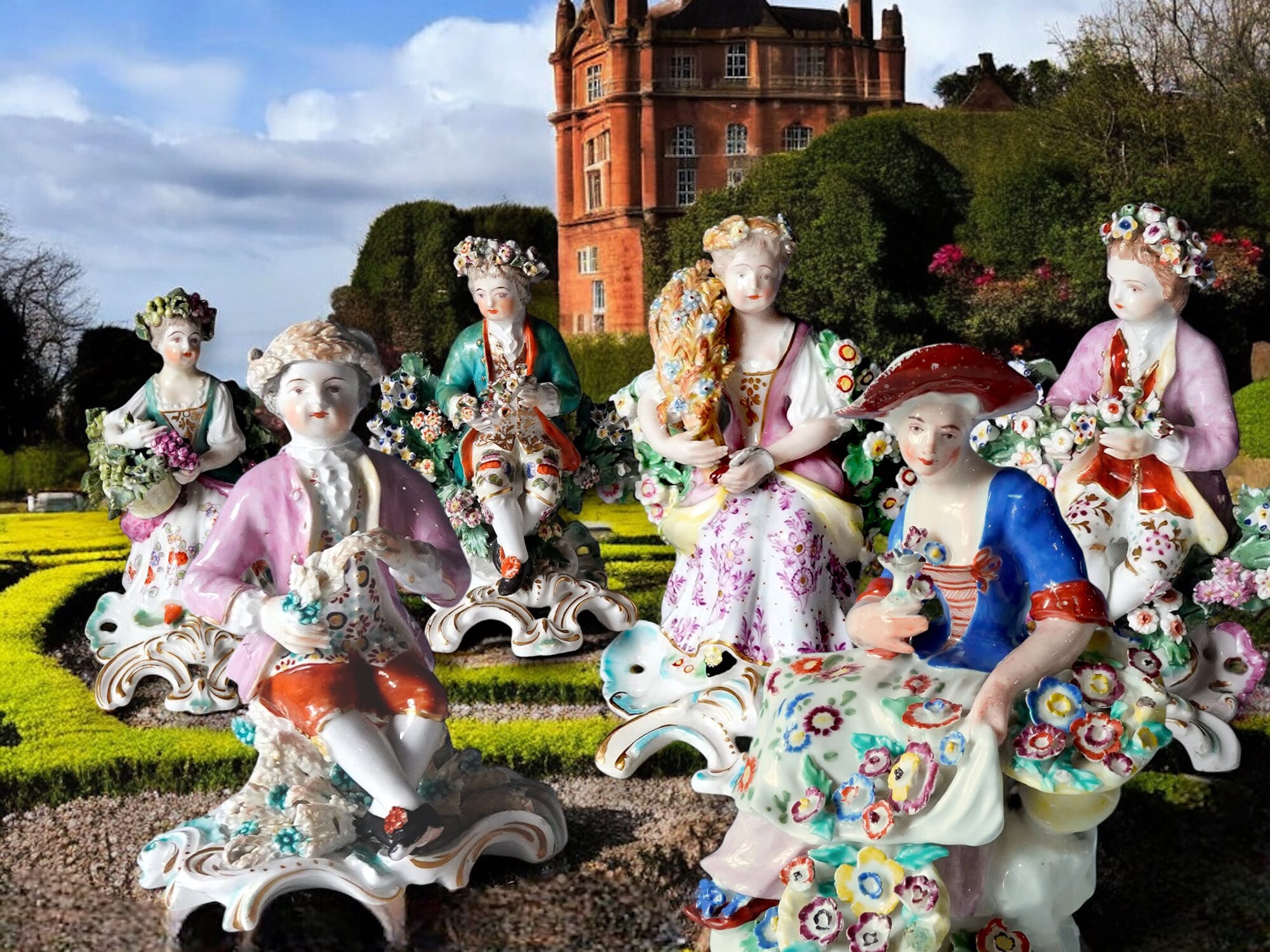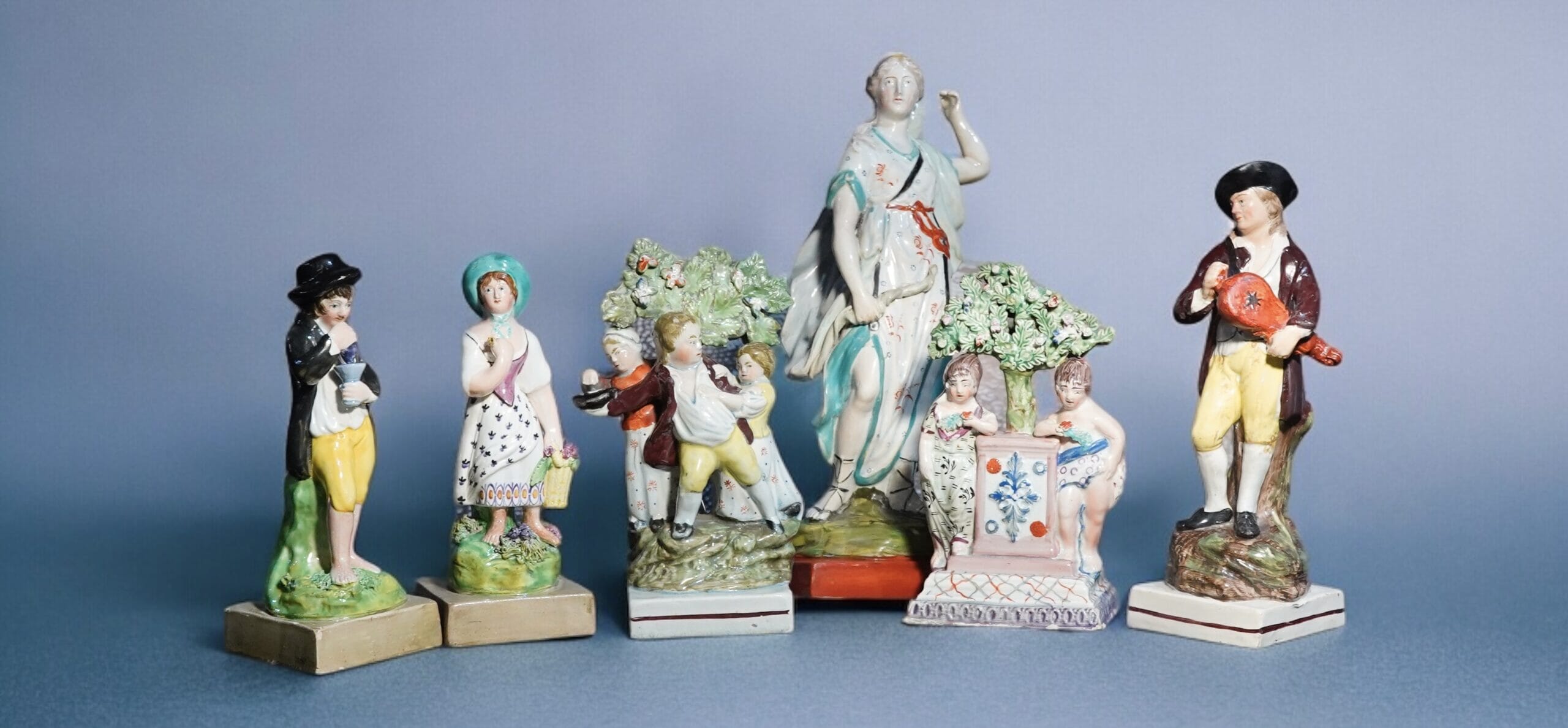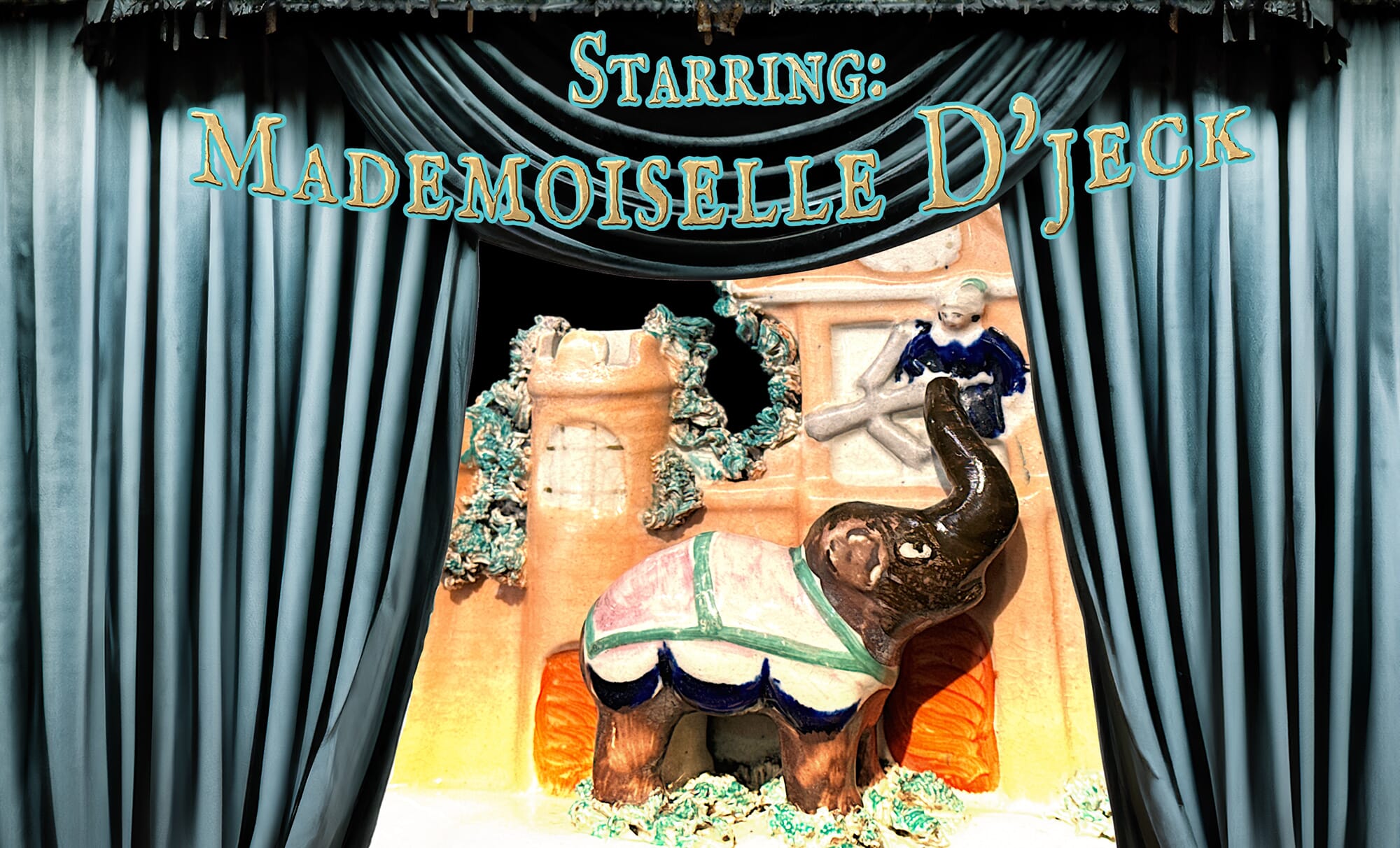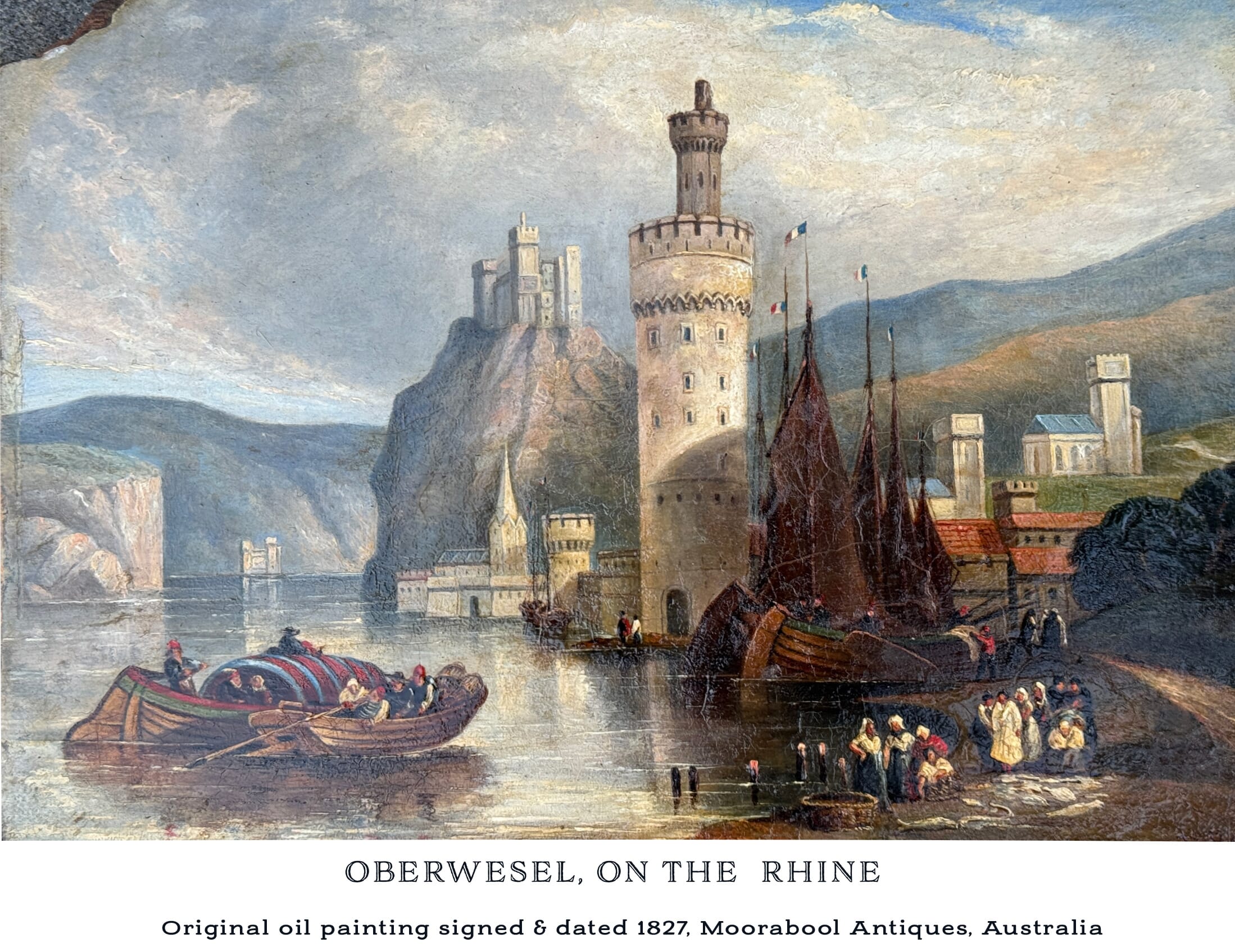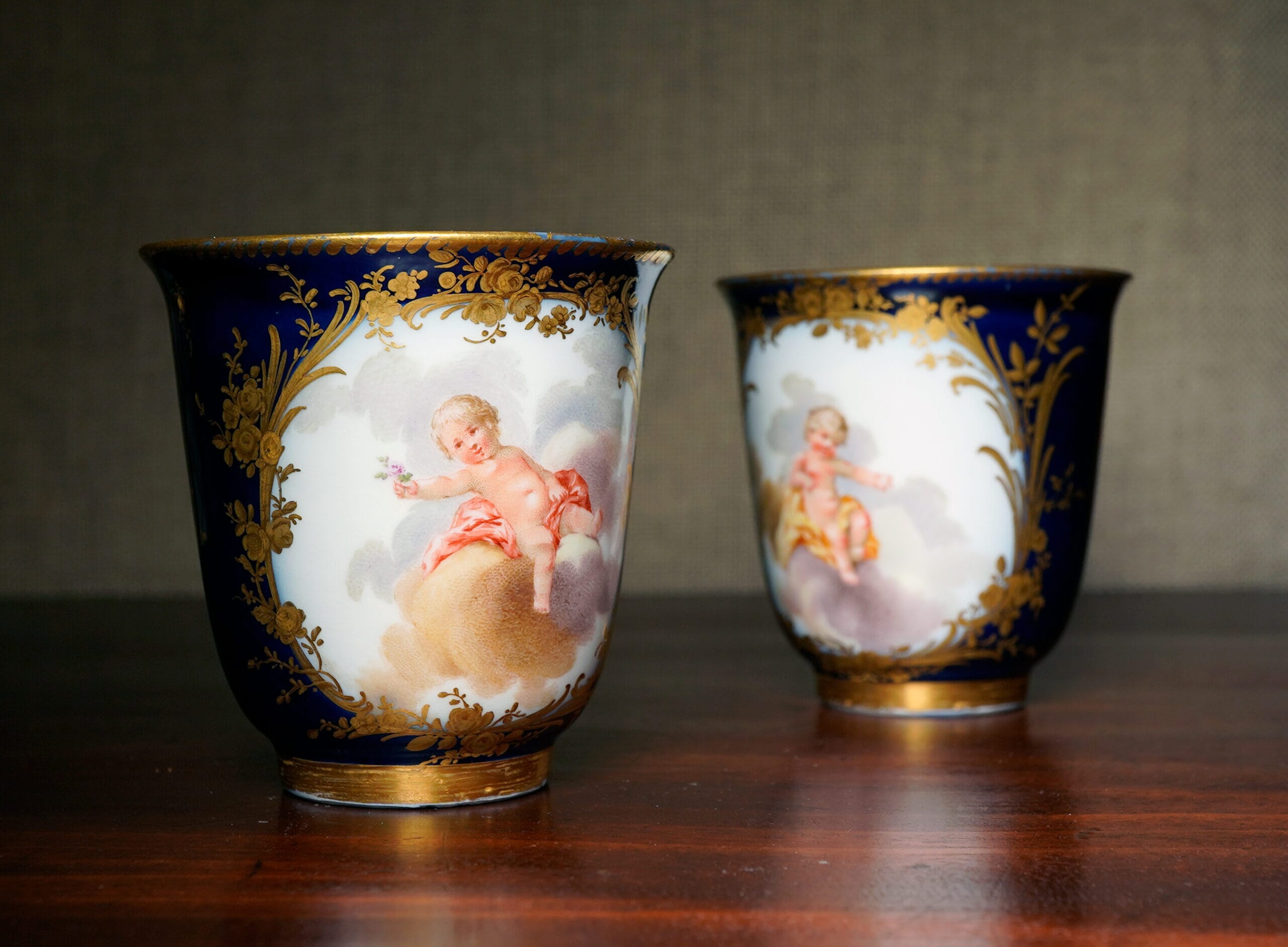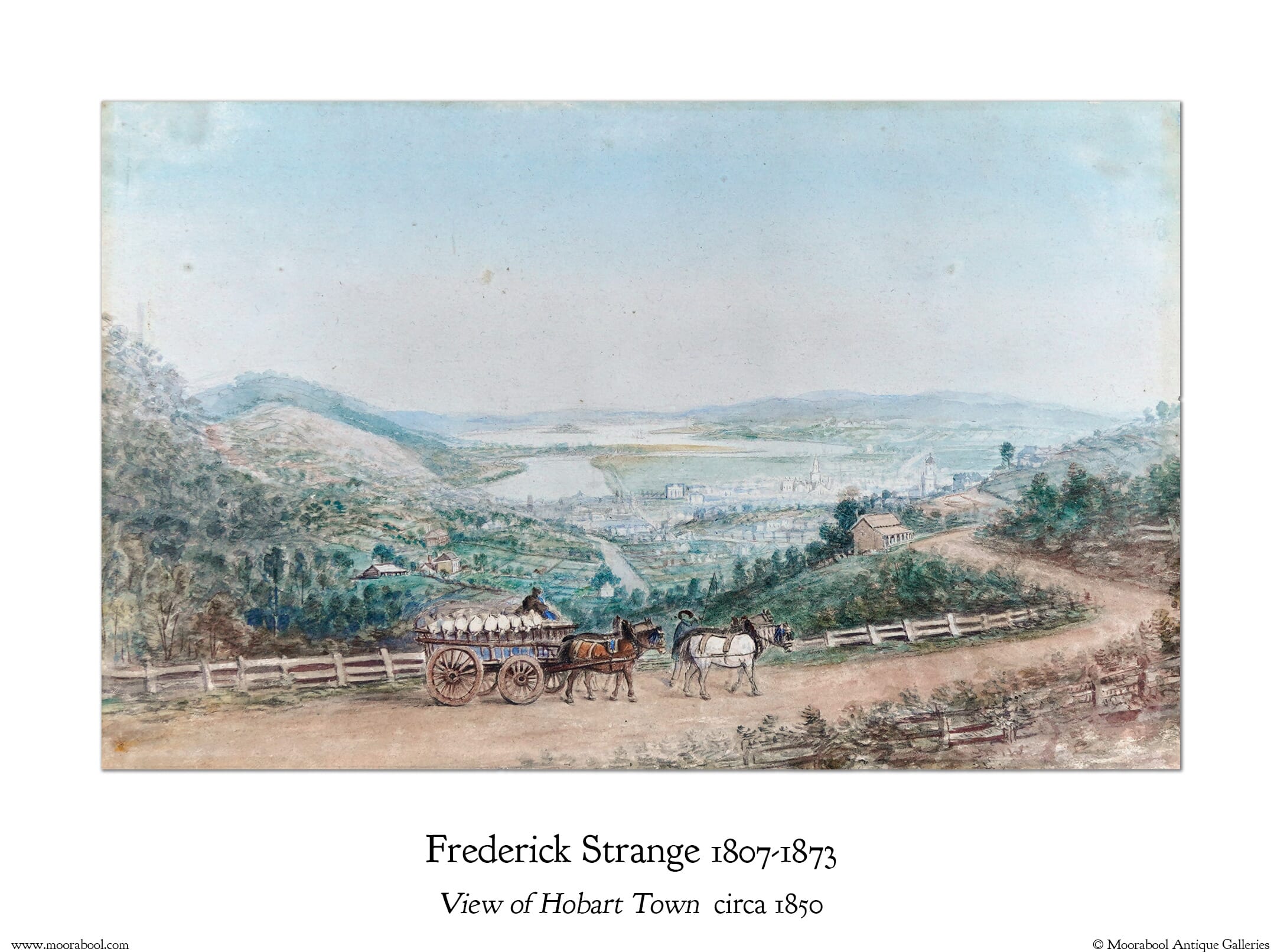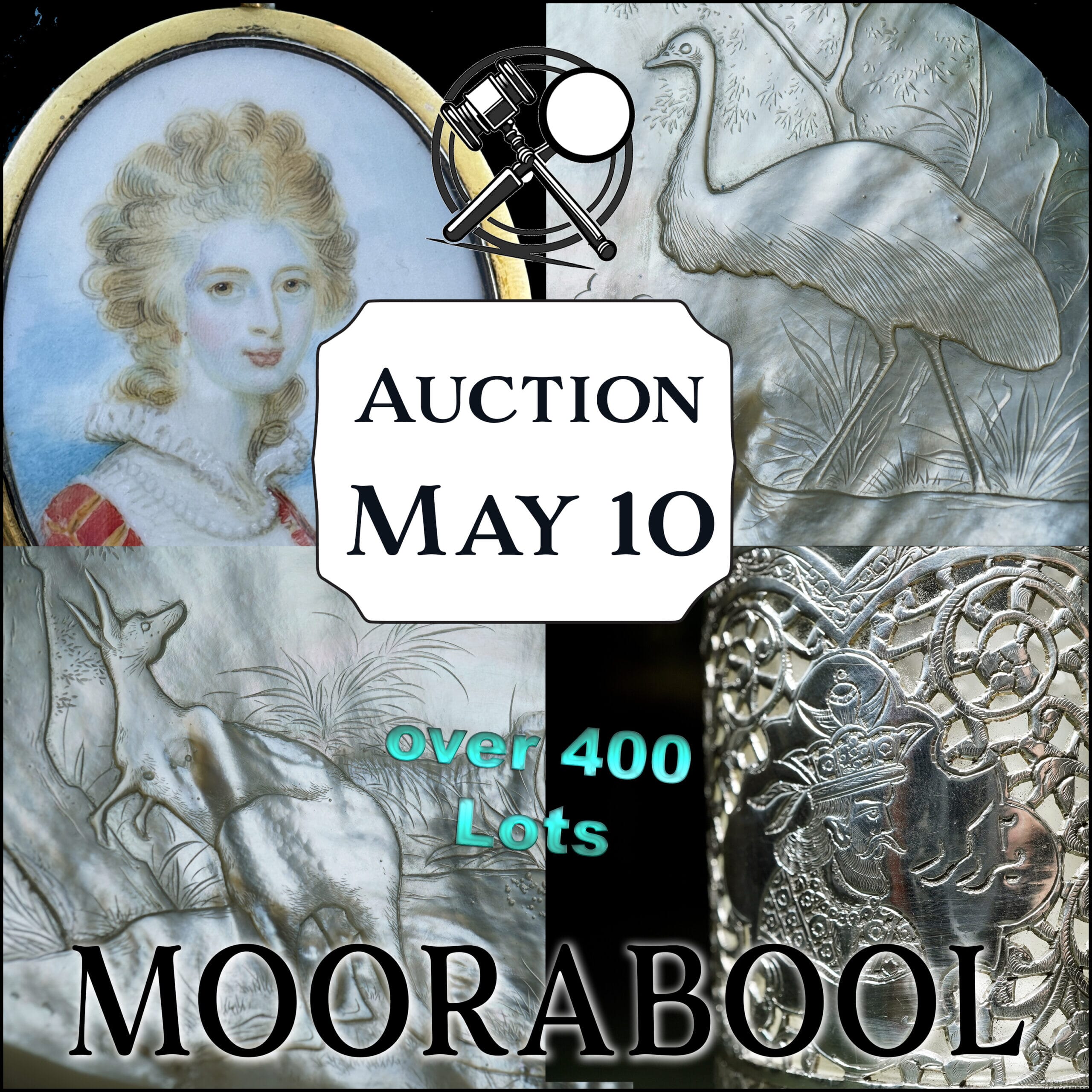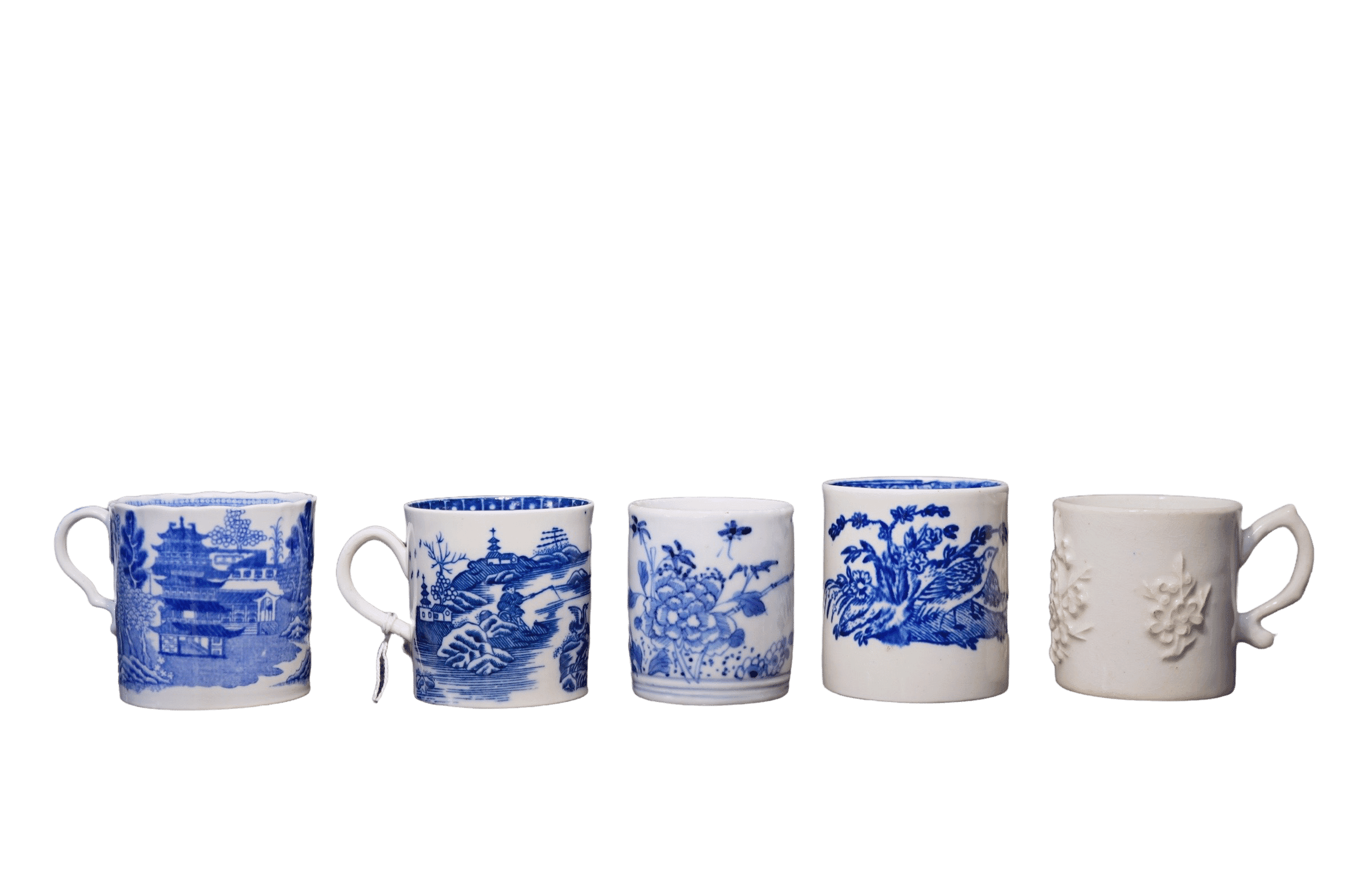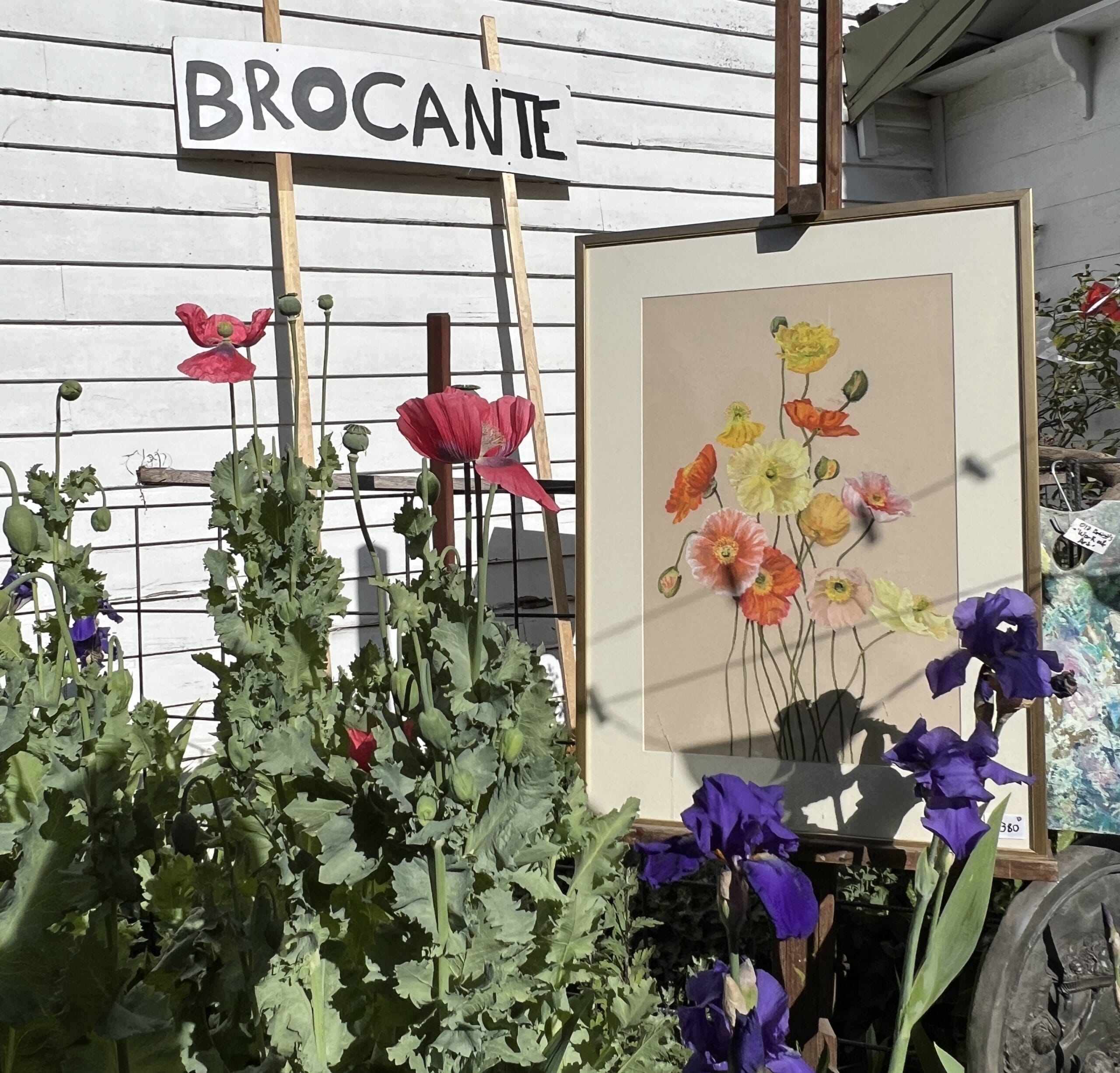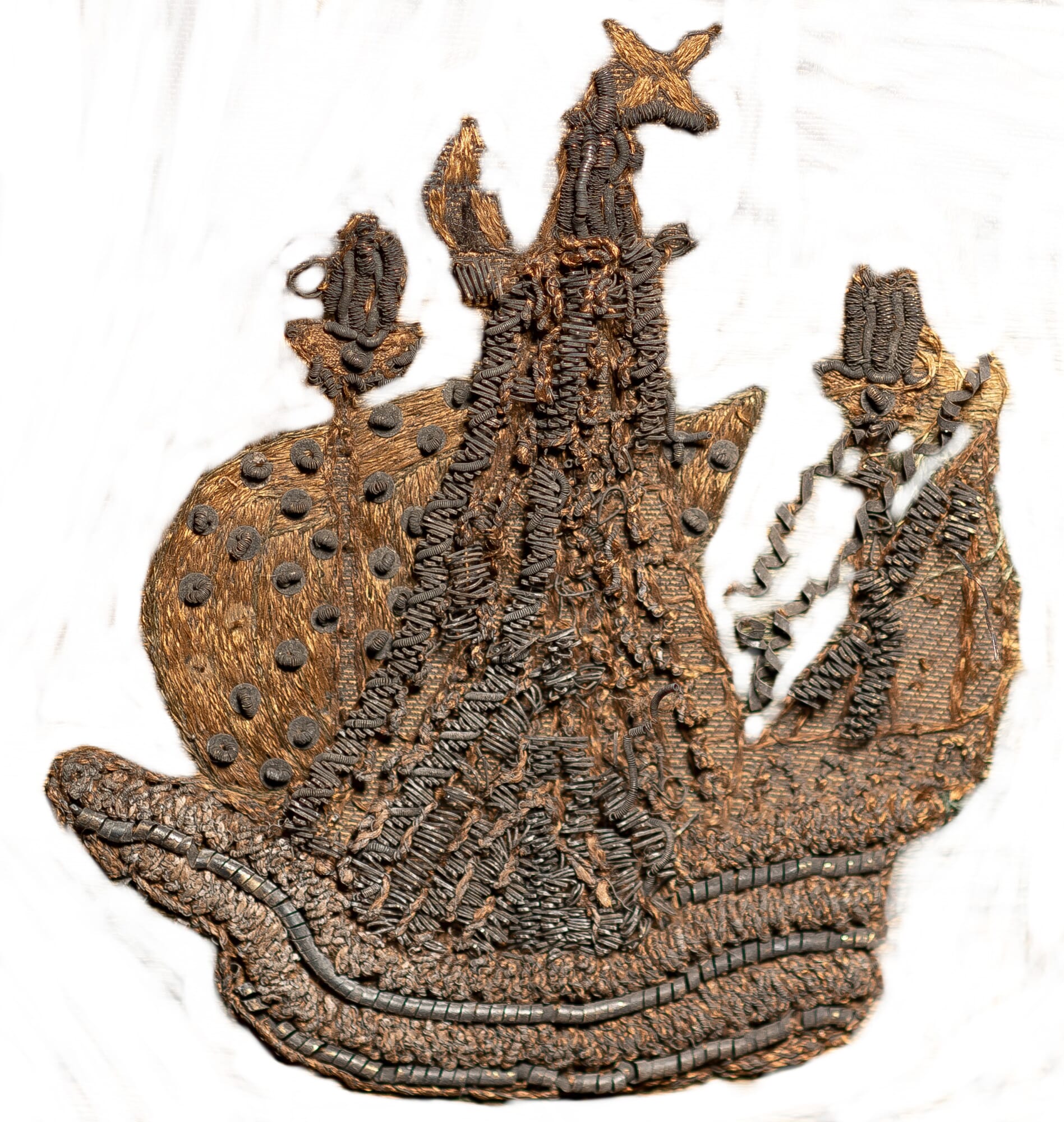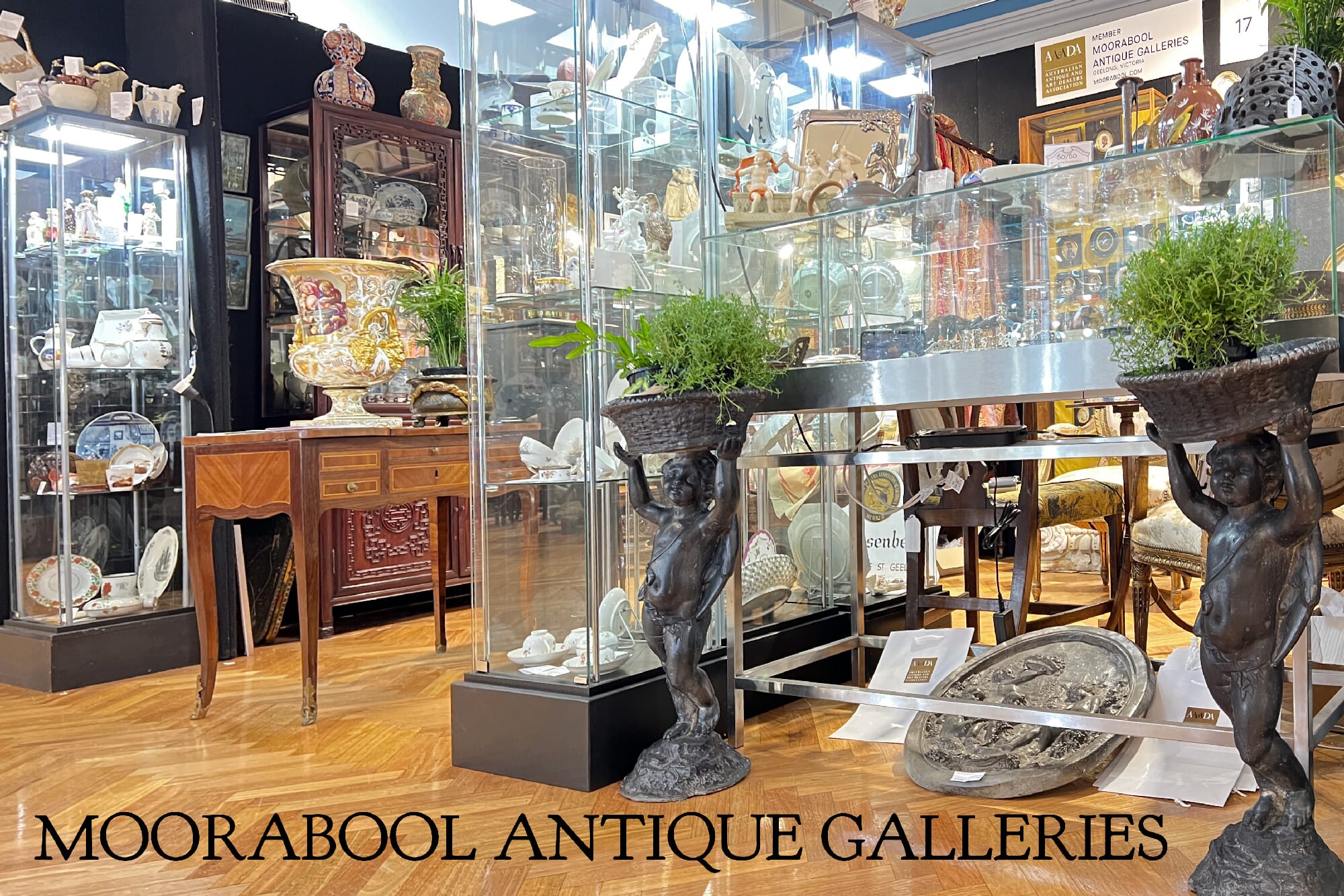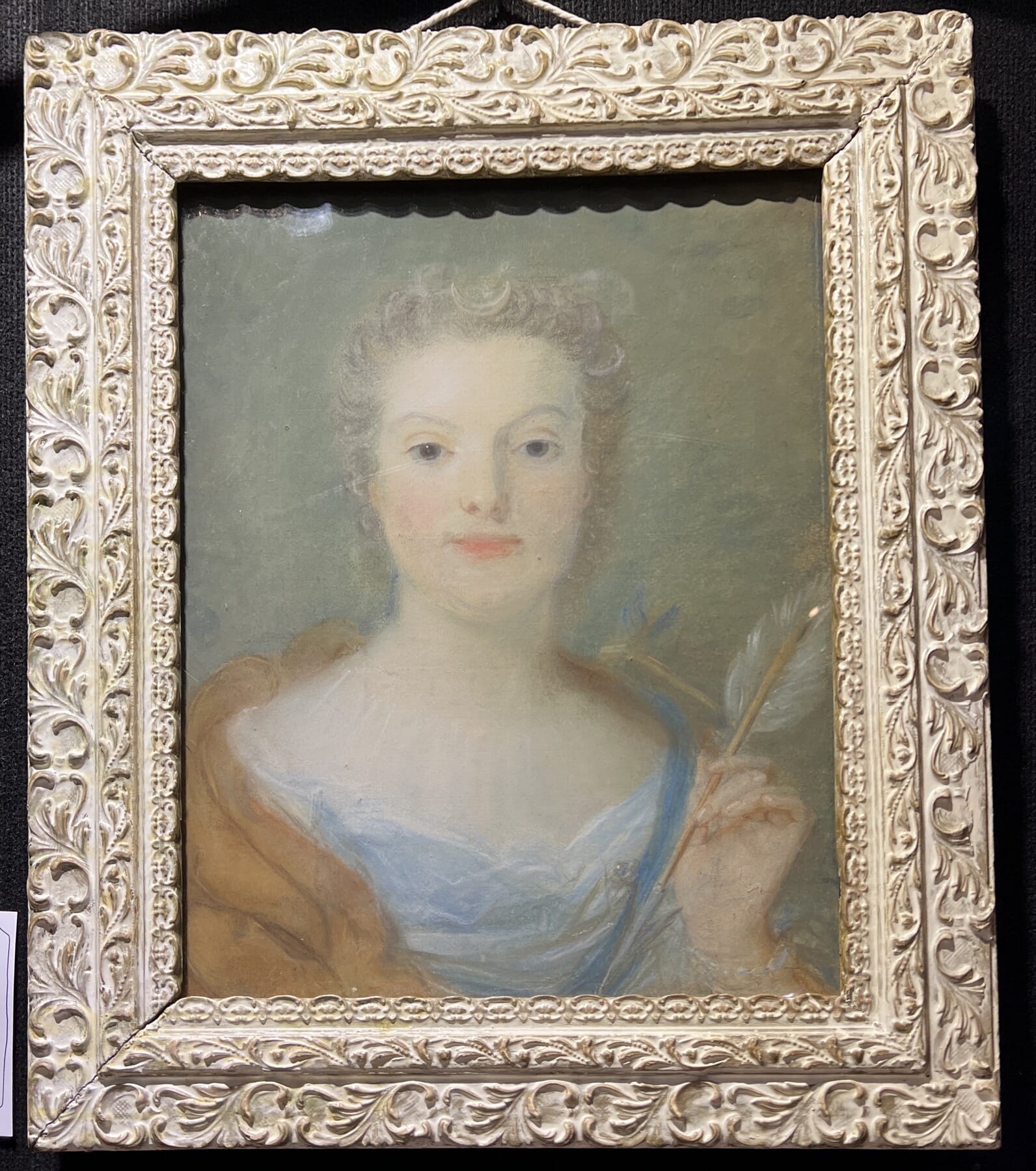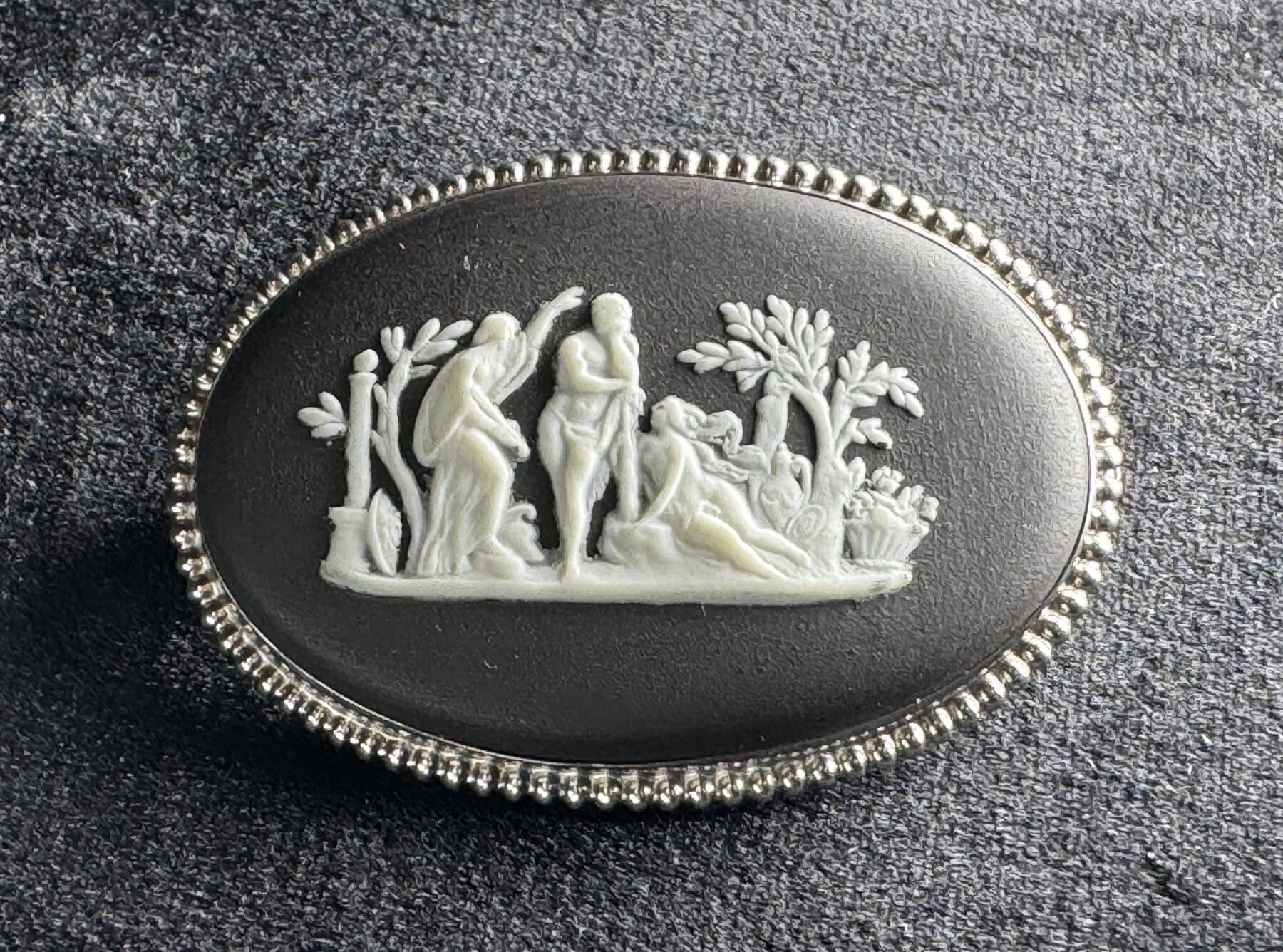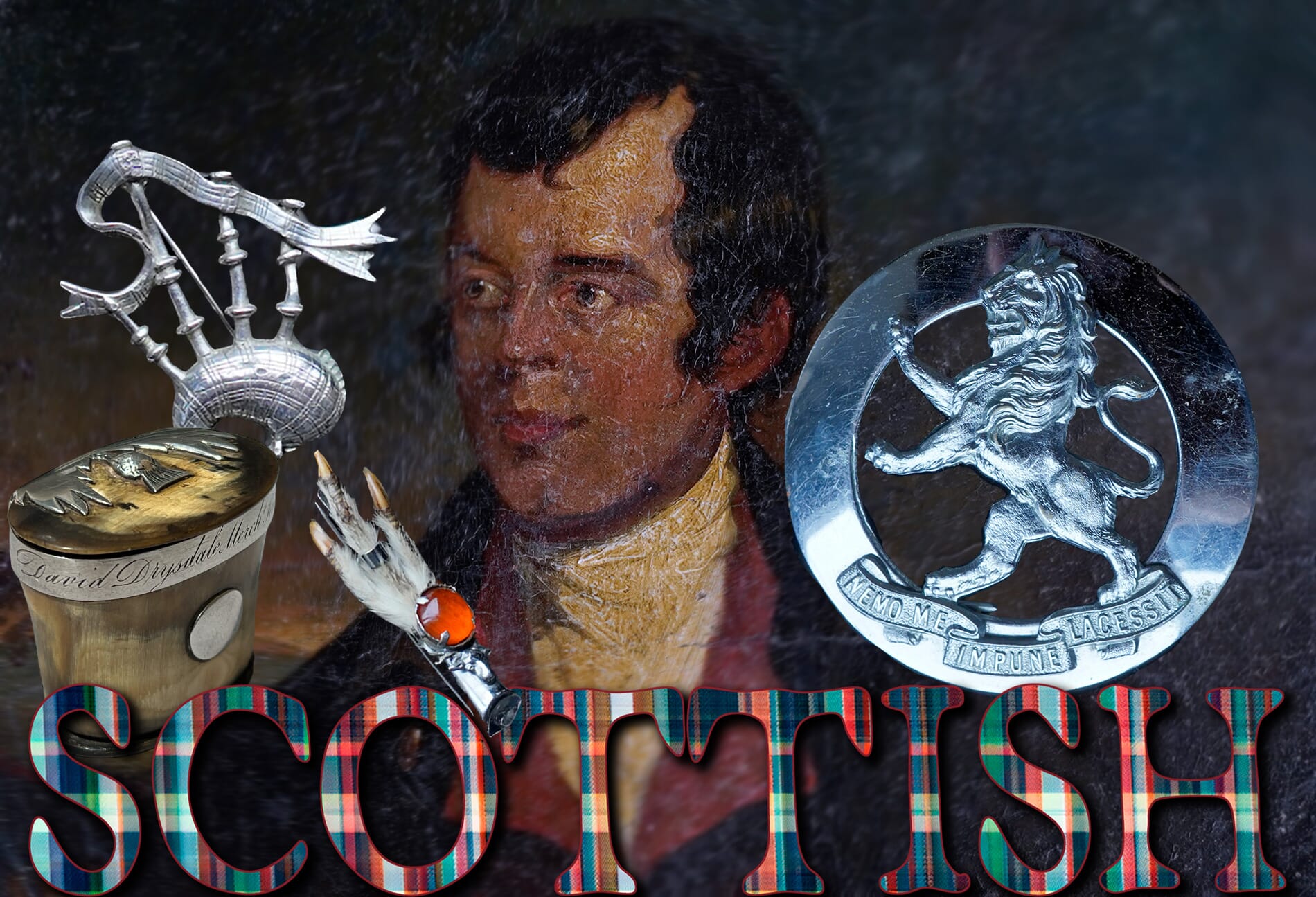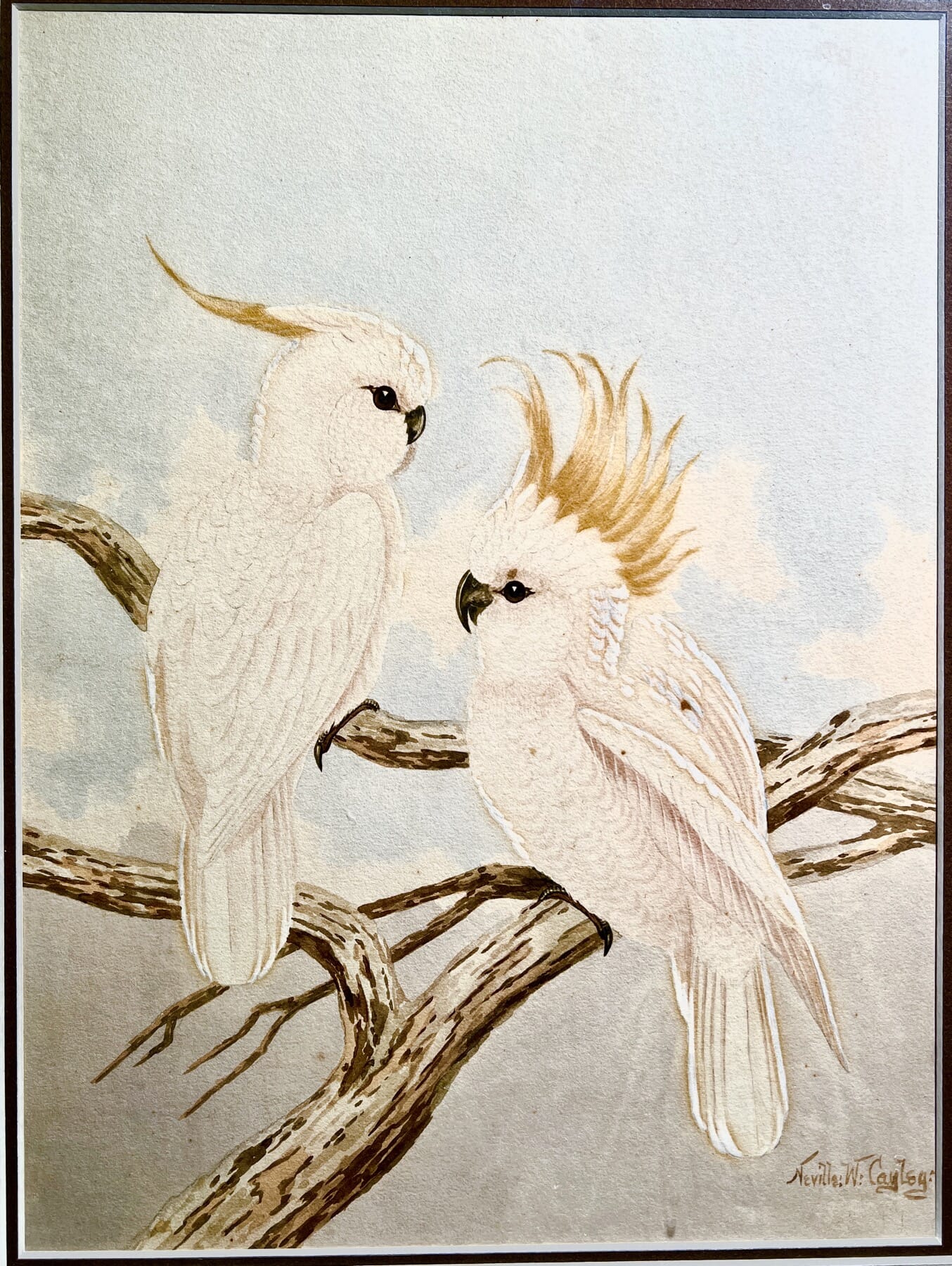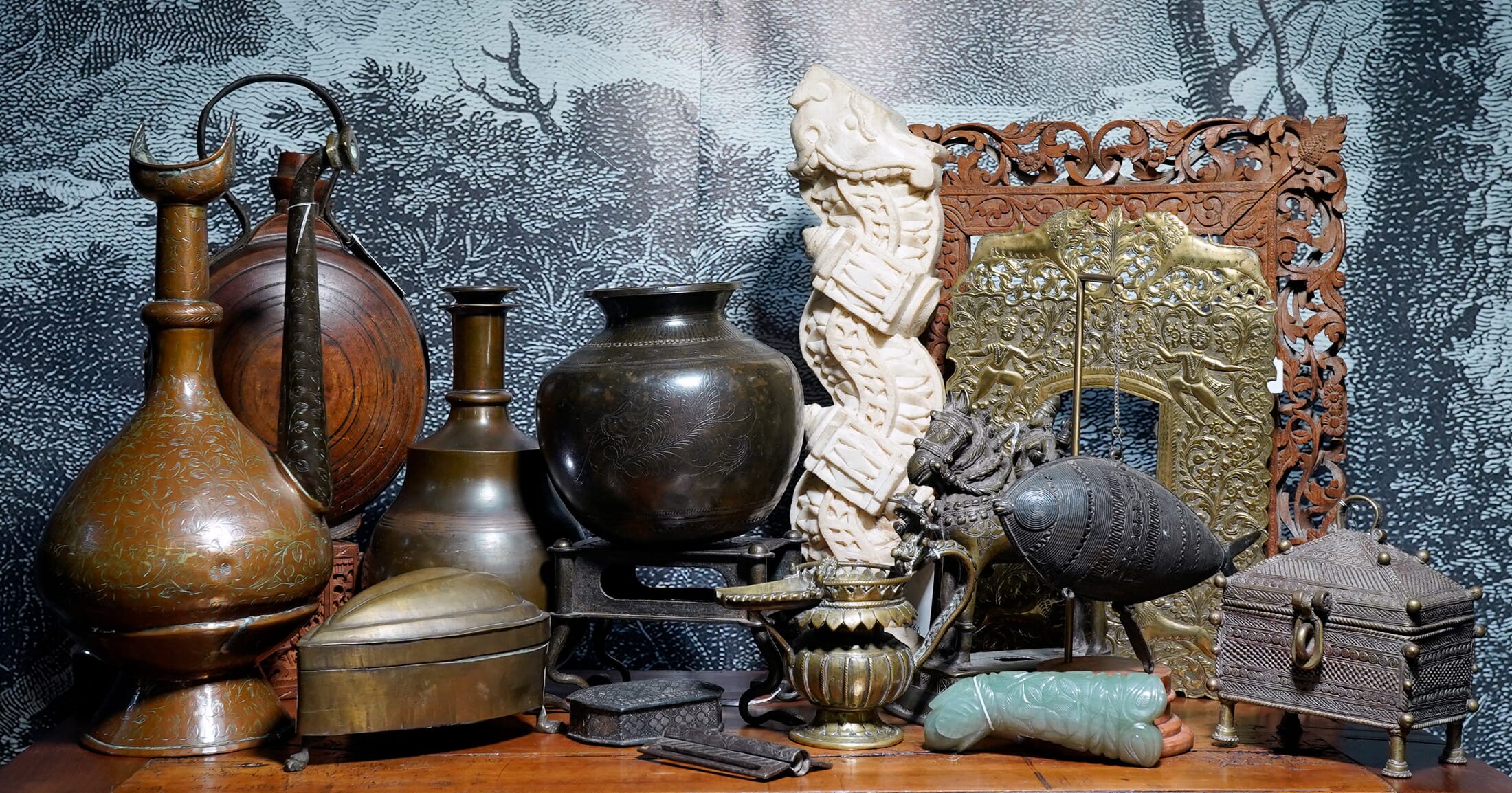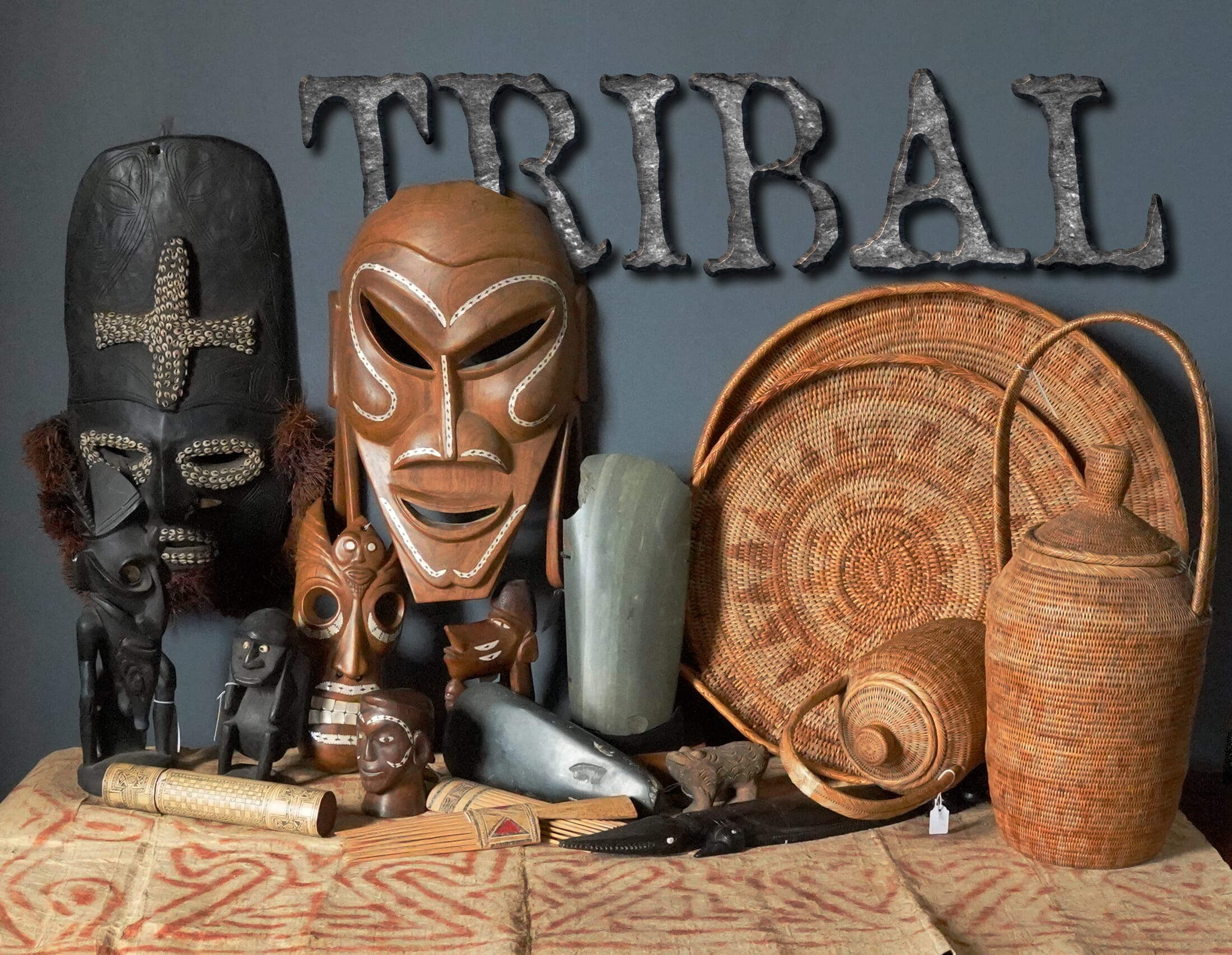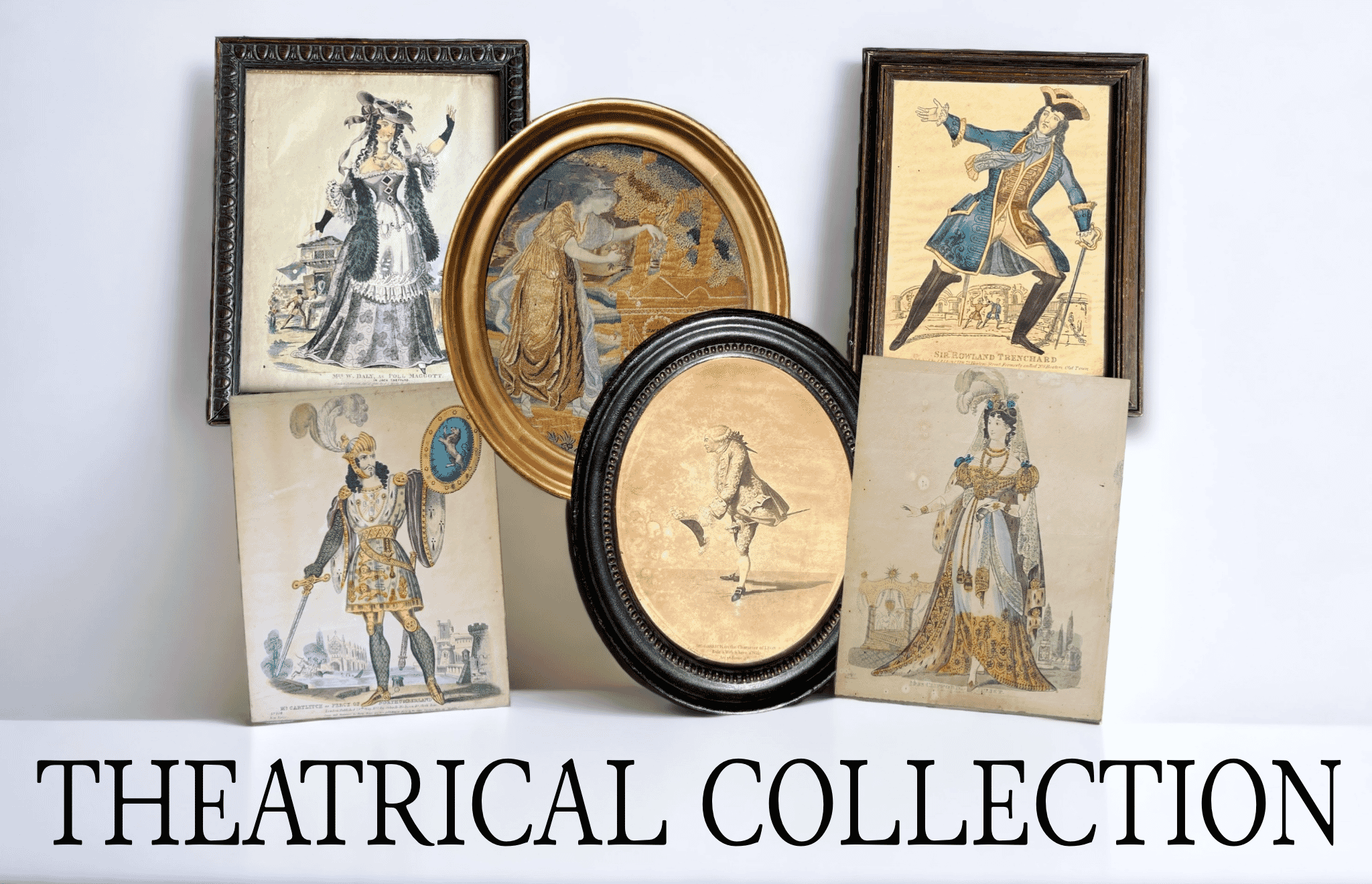Latest Fresh Stock Posts
Fresh Stock at Moorabool
Welcome to our latest Fresh Stock release. There’s quite a range of Fresh items to browse…. Here’s our new way of browsing: enjoy!…
Grace Darling, the Heroine of the Sea – in Staffordshire!
Grace Darling, the heroic lighthouse-keeper’s daughter is the subject of this rare Staffordshire figure fresh to Moorabool’s stock. But something is very peculiar with this example…. making it possibly unique!…
An Asian-themed Fresh Stock
Fresh Stock with an Asian Theme – a good quantity of items for you to browse from China, Japan, Burma, Thailand, and Sri Lanka…….
Fresh stock October 7th
Fresh Stock uploaded to moorabool.com . You’ll find a fine and varied selection, from Georgian Furniture to fine 18th century Porcelain, Australian Pottery, a host of Candlesticks, and interesting Artworks…
Premium Fresh Stock
Welcome to our selection of ‘the Best’ for the end of 2024. Some stunning rarities have come to us recently, with many local high-quality collections being dispersed. Enjoy your browse through the following Premium items -…
Derby ‘Adolescent Seasons’
Moorabool has a fascinating group of Derby ‘Seasons’, modelled as children with their respective attributes. They make for an interesting study, and show the development of the classic rococo-based Derby figures of the latter 18th…
Important Discoveries
Derby ‘Adolescent Seasons’
Moorabool has a fascinating group of Derby ‘Seasons’, modelled as children with their respective attributes. They make for an interesting study, and show the development of the classic rococo-based Derby figures of the latter 18th century….
A Staffordshire Fresh Stock
Welcome to our latest Fresh Stock. This one is a ‘Staffordshire Special’, with some early figures dating to the late 18th – early 19th century – as well as a good selection of classic Victorian pieces. There’s a couple of…
Mademoiselle d’Jeck, a rare Staffordshire Figure of a Theatre Star
Mademoiselle d’Jeck was a 4-ton prima-donna…. appearing all across Europe & America in the earlier 19th century, she was immortalised in a rare Staffordshire group. But her life was a lot darker, with a trail of deaths and broken…
David Roberts ‘Oberwesel’ 1829, re-discovered.
A local customer recently inherited a small number of Antiques from an uncle, including a most interesting oil painting. Set in its original frame, it was in ‘untouched’ condition, and in dire need of a clean. The way it was…
A Rare Pair: Meissen copies of Sèvres, by J.G. Loehnig, circa 1786
Sometimes, things don’t turn out to be what they look like. While that’s usually a pre-cursor for disappointment when we discover something is made later, or badly damaged – our recent experience was quite the opposite… An enquiry about…
Frederick Strange, View of Launceston from Sandhill c.1858
An important colonial work of art recently discovered by Moorabool is the work of the convict artist, Frederick Strange….
Moorabool News
May Auction
Moorabool is pleased to announce their May Auction is now available on Invaluable. It’s a ‘Live’ auction , meaning those who would like to attend in person can come & bid in our Geelong premises. Online, it is hosted by Invaluable.com Invaluable Auction There’s over 400 lots for you to browse &…
Tags – a Fresh way to browse our stock!
With over 10,000 items on moorabool.com, it’s always a struggle to find what you’re looking for. For some time now, we’ve been adding ‘tags’ to every item – descriptive words that define the item. We’re now pleased to launch our ‘Tag’ page…. a great way to see the variety we…
Très Français! French Celebration @ ‘The Heights’, Geelong, 28-29 Oct. 2023
Bonjour! Moorabool is pleased to be a part of the 2023 ‘Le Festival Français’, to be held on the last weekend of October 2023. It’s a fabulous celebration of all things French – Food, Wine, Music – there’s even a ‘New Caledonia Tourism’ stand which is giving away a trip…
A Sensational Tudor Discovery
An Important piece of Tudor History has just been identified in Australia. A Royal piece of needlework with visual clues to authorship leads to a remarkable conclusion involving the founding of Spain, Christopher Columbus, and Henry VIII of England, with his wife Catherine of Aragon….
2022 Melbourne Antique Fair, Malvern Town Hall
Moorabool’s exhibiting at the 60th Antique Dealer’s Fair in Melbourne – and that’s 60 out of 60 attended! Have a look around with these photos…….
A Fresh Discovery – 1751 Pastel by Perronneau, finest portraitist of his day.
Regarded by the leading expert Neil Jeffares as one of the two ‘best pastel portraitists’ of the 18th century, Jean-Baptiste Perronneau (1716-1783) is rarely seen outside collections. We were very excited to find a previously unrecorded portrait in Melbourne recently. It had an inscription on the back which gave us…
Curated Collections
Mother’s Day Gift ideas-
A small selection of Mother’s Day gift ideas for this up coming special day on 12th May 2024- still plenty…
Curated Collection – Scottish
Browse our Scottish Antiques – a selection from our shop….
Curated -Australiana
Australia has a vast range of items unique to this ‘Great Southern Land’…. from the First Nation’s fascinating art &…
Anglo-Indian Antiques & Art
See more Indian items Indian Bronzes ‘Indian’ Silver As the British enriched on Burma, they assimilated the artworks of Burma (Myanmar) into…
Tribal Focus
An exotic collection of ‘Tribal’ has just been launched on Moorabool.com – from Australian Aboriginal, to our closest neighbour, Papua…
Stage & Literature
Some interesting items in stock at Moorabool are all about the Stage: this is the pop-culture of the 18th…
